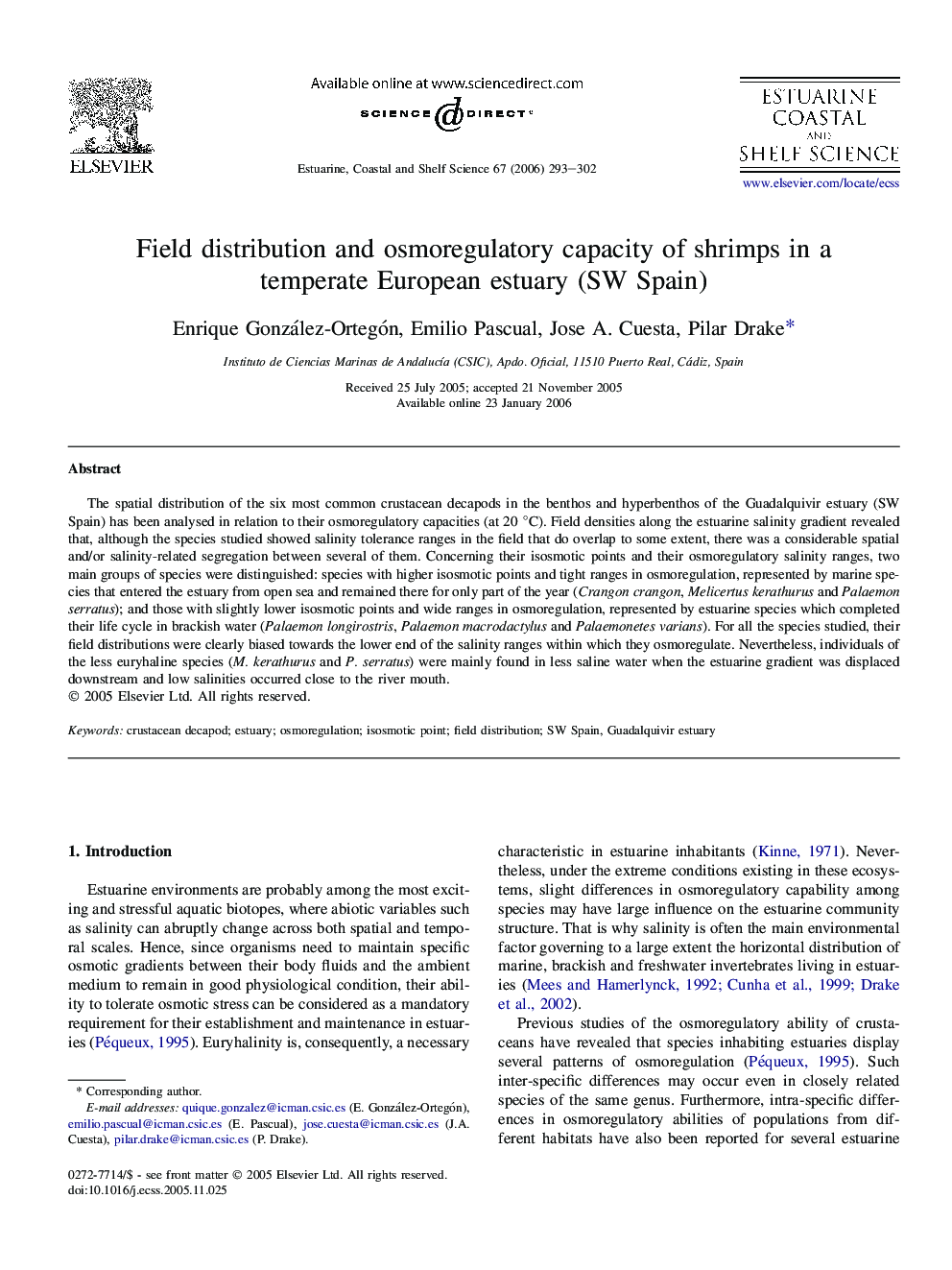| Article ID | Journal | Published Year | Pages | File Type |
|---|---|---|---|---|
| 4542338 | Estuarine, Coastal and Shelf Science | 2006 | 10 Pages |
The spatial distribution of the six most common crustacean decapods in the benthos and hyperbenthos of the Guadalquivir estuary (SW Spain) has been analysed in relation to their osmoregulatory capacities (at 20 °C). Field densities along the estuarine salinity gradient revealed that, although the species studied showed salinity tolerance ranges in the field that do overlap to some extent, there was a considerable spatial and/or salinity-related segregation between several of them. Concerning their isosmotic points and their osmoregulatory salinity ranges, two main groups of species were distinguished: species with higher isosmotic points and tight ranges in osmoregulation, represented by marine species that entered the estuary from open sea and remained there for only part of the year (Crangon crangon, Melicertus kerathurus and Palaemon serratus); and those with slightly lower isosmotic points and wide ranges in osmoregulation, represented by estuarine species which completed their life cycle in brackish water (Palaemon longirostris, Palaemon macrodactylus and Palaemonetes varians). For all the species studied, their field distributions were clearly biased towards the lower end of the salinity ranges within which they osmoregulate. Nevertheless, individuals of the less euryhaline species (M. kerathurus and P. serratus) were mainly found in less saline water when the estuarine gradient was displaced downstream and low salinities occurred close to the river mouth.
